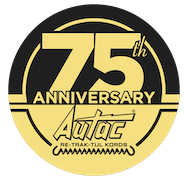As technology advances, the demand for high-quality cables that can withstand harsh environments and heavy usage has become increasingly important. When it comes to choosing between spiral cables and straight cables, there are several factors to consider. Spiral cables are known for their flexibility and durability, while straight cables offer a more traditional design.
In this article, we will explore the advantages and disadvantages of both types of cables. To help you determine which is better suited for your specific application. Whether you’re working in the automotive industry or designing a new piece of machinery, understanding the differences between spiral and straight cables can make all the difference in ensuring optimal performance and longevity.
What are Spiral Cables?
Spiral cables, also known as coiled cables, are a type of cable that is designed to stretch and retract without tangling or getting damaged and it is a great convenience factor. These cables are made by wrapping multiple wires, which allows them to expand and contract in a spiral shape. The spiral cable is commonly used in applications where flexibility and durability are important, such as robotics, medical equipment, and automotive wiring. One of the key features of spiral cables is their ability to extend and retract without becoming tangled or kinked. They are, therefore, excellent for applications where the cable must move with the associated device.
Additionally, the spiral cable can be manufactured with different materials and sizes depending on the specific application requirements. For example, they can be made with high-temperature insulation in industrial ovens or waterproof coatings for outdoor use. Overall, spiral cables offer a reliable solution for applications that require flexibility and durability.
What are Straight Cables?
Straight cables are the most common type of cable used in various applications. As the name suggests, these cables have a linear structure and do not have any twists or turns like spiral cables. Straight cables comprise multiple wires that run parallel to each other, enclosed in an insulating material such as PVC or rubber. Depending on their application, serial cables come in different sizes, lengths, and types. They can be used for power transmission, data transfer, audio and video transmission, and many other purposes. Straight cables are easy to install and maintain compared to spiral cables.
Straight cables are a reliable choice for most applications due to their simplicity and versatility. However, they may not be suitable for applications requiring flexibility or tangling resistance. In the next section, we will discuss the advantages and disadvantages of using straight cables in more detail.
Advantages and Disadvantages of Spiral Cables
Spiral cables are known for their flexibility and durability. They are designed to withstand frequent bending and twisting without breaking or damaging the wires. One of the biggest advantages of spiral cables is that they can stretch up to several times their original length, making them ideal for applications where movement is required, such as in robotics or medical equipment.
However, spiral cables also have some disadvantages. Because of their coiled design, they can be difficult to install and may require more space than straight cables. Additionally, suppose a wire inside the line breaks or becomes damaged. In this case, it can be challenging to locate and repair the issue due to the spiral design.
Finally, spiral cables may be more expensive than straight cables due to their specialized design and manufacturing process. Whether spiral cable is better for your application depends on your needs and requirements. A spiral cable may be the best choice if you need a line that can handle frequent movement and stretch without breaking. However, a straight cable may be a better fit if you have limited space or need an affordable option.
Advantages and Disadvantages of Straight Cables
When it comes to straight cables, the biggest advantage is their simplicity. They are easy to manufacture and install, making them a popular choice for many applications. Straight cable also tends to be more durable than spiral cable because they don’t have any moving parts that can wear out over time. However, straight cables do have some disadvantages as well. One of the main issues with straight cables is their tendency to tangle and knot up. If the cord gets overly knotted, this may irritate users and harm the cable.
Straight cables can be less flexible than spiral cables, limiting their use in certain applications where flexibility is important. Whether you choose a straight cable or a spiral cable will depend on your specific application and needs. It’s important to weigh each option’s advantages and disadvantages carefully before deciding.
Key Factors to Consider When Choosing Between Spiral and Straight Cables
When it comes to choosing between spiral and straight cables, there are several key factors that you need to consider. One of the most important factors is the flexibility of the cable.
The spiral cable is known for its flexibility and ability to stretch, making it ideal for applications requiring movement. On the other hand, straight wires are more rigid and may not be suitable for applications that require a lot of movement.
The conditions in which the cable will be used are another aspect to think about. Spiral cables are often used in harsh environments where they may be exposed to chemicals, extreme temperatures, or high moisture levels.
Straight cables may not hold up well in these environments and may become damaged over time. Finally, you should also consider the cost of each type of cable. Spiral cables are more expensive than straight cables due to their unique design and manufacturing process.
However, if your application requires a flexible cable that can withstand harsh conditions, investing in a spiral cable may be worth the extra cost. When choosing between spiral and straight lines, it’s important to carefully consider your specific application needs and weigh the pros and cons of each option before making a decision.
Understanding the Applications Where Spiral Cables Excel
Spiral cables are known for their flexibility and durability, making them an ideal choice for applications that require frequent movement or bending. These cables are commonly used in robotics, automation, and medical equipment, where the cable needs to move with the machine without getting tangled or damaged.
Spiral cables are also great for applications that require a long extension length because they can stretch and retract without putting stress on the cable. Another application where spiral cables excel is portable electronics such as headphones and chargers. The cable’s coiled design allows it to be compact when not in use but still extends to a comfortable length when needed. Without worrying about tangles or knots, it is now simple to carry.
Overall, spiral cables are a versatile option for applications that require flexibility, durability, and ease of use. If your application involves frequent movement or bending, then a spiral cable might be your best choice.
Understanding Applications Where Straight Cables Excel
Straight cables are the go-to choice for many applications due to their simplicity and durability. They are ideal for applications where the cable must be rigid and not prone to bending or twisting, such as in industrial machinery or heavy equipment.
Straight cables can also handle high voltage and current levels, making them suitable for power transmission. Another advantage of straight wires is that they are less expensive than spiral cables. They are therefore a popular option for situations where price plays a big role.
Additionally, straight cables can be easily installed and maintained, which saves time and money in the long run.
However, it’s important to note that straight cables may only be suitable for some applications. A spiral cable may be a better option if your application requires frequent movement or flexibility. It’s essential to consider all factors before choosing between spiral and straight cables to ensure you select the right cable for your specific application needs.
Spiral vs. Straight Cables: A Detailed Comparison
When choosing between spiral and straight cables, it’s important to understand the differences. Spiral cables are multiple wires twisted together in a helix pattern. In contrast, consecutive cables consist of individual wires that run parallel. One of the main advantages of spiral cables is their flexibility. They can stretch and bend without breaking, making them ideal for applications requiring movement, such as robotics or machinery with moving parts.
The spiral cable also has a smaller bend radius than straight cables, which means they can be used in tight spaces. On the other hand, straight cables are more durable and have a longer lifespan than spiral cables. They are less likely to break or wear out over time, making them a good choice for applications where reliability is key. Straight cables also have better signal integrity than spiral cables, making them less likely to experience interference or signal loss.
Choosing between spiral and straight cables will ultimately depend on your specific application needs. Consider factors such as flexibility, durability, and signal integrity when deciding.
How to Choose the Right Cable for Your Application
Now that you better understand the key differences between spiral and straight cables, it’s time to choose the right cable for your application. The first step is to identify the specific needs of your application, such as the required length, flexibility, durability, and electrical properties.
Once you have identified your requirements, consider the environment in which the cable will be used. Will it come in contact with harmful chemicals or high temperatures? Will it need to withstand frequent movement or bending? These factors help determine whether a spiral or straight cable suits your application.
Lastly, remember to factor in the cost when choosing a cable. Spiral cables can cost more than straight cables, even though they may be more flexible and long-lasting.
Consider your budget and weigh the benefits of each type of cable before making a final decision by considering these factors and carefully evaluating your options. You can choose the right cable for your application to ensure optimal performance and longevity. Retractile power cords are also best for home and office applications.
Conclusion
In conclusion, the choice between spiral and straight cables ultimately depends on the specific application and requirements—spiral cable offer flexibility and durability in applications where constant movement is required. At the same time, straight cables provide a more stable connection for stationary applications. It’s important to consider factors such as space limitations, environmental conditions, and budget.
The spiral cable is ideal for applications that require flexibility, mobility, and resistance to tangling or twisting. On the other hand, straight wires are suitable for applications that require durability, high-speed data transfer, and minimal signal loss.
Ultimately, it is essential to consider the specific needs of your application before making a decision. By understanding the differences between spiral and straight cables and evaluating your requirements carefully, you can choose the right cable to provide optimal performance and reliability for your application.







Recent Comments